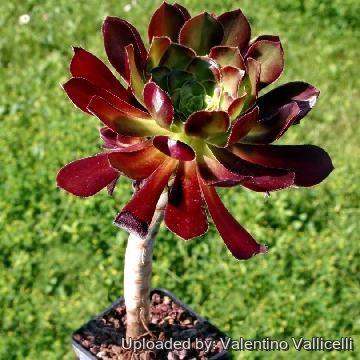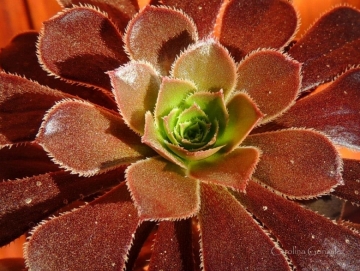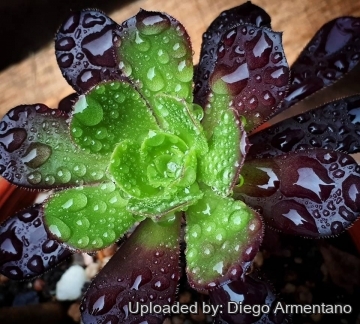Donate now to support the LLIFLE projects.
Your support is critical to our success.
Your support is critical to our success.
Accepted Scientific Name: Aeonium arboreum var. atropurpureum (W.A. Nicholson) A.Berger

Aeonium atropurpureum (Aeonium arboreum var. atropurpureum) Photo by: Valentino Vallicelli
This beautiful species has large heads of deep purple foliage truly stand out against other greenery.
This beautiful species has large heads of deep purple foliage truly stand out against other greenery.
Synonyms:
- Aeonium arboreum var. atropurpureum (W.A. Nicholson) A.Berger
See all synonyms of Aeonium arboreum
back
Accepted name in llifle Database:Aeonium arboreum (L.) Webb & Berthel.
Hist. Nat. Iles Canaries (Phytogr.). i. 185 (1836).
Synonymy: 10
- Aeonium arboreum (L.) Webb & Berthel.
- Aeonium arboreum var. albovariegatum (Weston) Boom
- Aeonium arboreum var. luteovariegatum (Weston) Boom
- Aeonium doramae Webb ex A.Berger
- Aeonium doremae Webb ex Christ
- Aeonium manriqueorum Bolle
- Sempervivum chrysanthum Hochst. ex Britten
Aeonium arboreum var. atropurpureum (W.A. Nicholson) A.Berger
Synonymy: 4
- Aeonium arboreum var. atropurpureum (W.A. Nicholson) A.Berger
Aeonium arboreum atropurpureum f. cristatum hort.
Synonymy: 2 Accepted name in llifle Database:
Aeonium arboreum subs. holochrysum (H.Y.Liu) Bañares
Willdenowia 38: 476 2008
Synonymy: 5
- Aeonium arboreum subs. holochrysum (H.Y.Liu) Bañares
- Aeonium arboreum var. holochrysum H.Y.Liu
- Aeonium holochrysum Webb & Berthel.
- Aeonium vestitum Svent.
- Sempervivum urbicum Lindl.
Aeonium arboreum subs. korneliuslemsii (H.Y.Liu) Dobignard
Index Syn. Fl. Afrique N. 3: 354. 2011 [Jun 2011]
Synonymy: 2
- Aeonium arboreum subs. korneliuslemsii (H.Y.Liu) Dobignard
- Aeonium korneliuslemsii H.Y.Liu
Aeonium arboreum var. rubrolineatum (Svent.) H.Y.Liu
NMNS, Taiwan, Special Publ. 3 68 1989
Synonymy: 2
- Aeonium arboreum var. rubrolineatum (Svent.) H.Y.Liu
- Aeonium rubrolineatum Svent.
back

Aeonium atropurpureum (Aeonium arboreum var. atropurpureum) Photo by: Valentino Vallicelli

Aeonium atropurpureum (Aeonium arboreum var. atropurpureum) Photo by: Carolina González

Aeonium atropurpureum (Aeonium arboreum var. atropurpureum) Photo by: Diego Armentano
Send a photo of this plant.
The gallery now contains thousands of pictures, however it is possible to do even more. We are, of course, seeking photos of species not yet shown in the gallery but not only that, we are also looking for better pictures than those already present. Read More...
The gallery now contains thousands of pictures, however it is possible to do even more. We are, of course, seeking photos of species not yet shown in the gallery but not only that, we are also looking for better pictures than those already present. Read More...
| Your Actions | |
|---|---|
| Back to Aeonium index | |
| Back to Crassulaceae index | |
 |
Back to Succulents Encyclopedia index |









